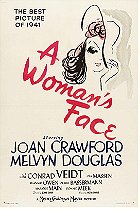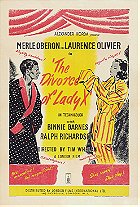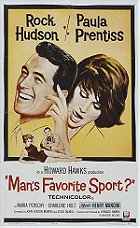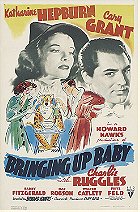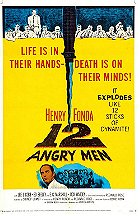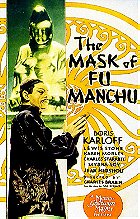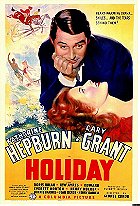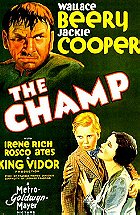Posted : 10 years, 9 months ago on 25 September 2014 09:55
(A review of
*** This review contains spoilers ***
I don’t think I can bestow a higher statement of praise on a film than to call it a life-changing experience. 12 Angry Men influenced me not to believe everything I hear, instead to question things and ultimately turning me into a more skeptical person; there is more to life than meets the eye (or ear). It’s one of few films which helped shape who I am as a person. When watching it I constantly visualise the details in my head of the events and locations of the murder case being described. At the beginning of the film, all the jurors bar one believe the boy in question is guilty of murdering his father. By the end of the film, they all change their vote to not guilty. How is this possible? Why just the most incredible 90-minute exhibition of human psychology and argumentation. I enjoy never knowing what really happened; did the kid commit murder or not? - It’s up for the viewer to decide. 12 Angry Men is a movie that is hard to write a review for; I wouldn’t be surprised if I come back to add more since I find myself watching 12 Angry Men at least once a year. With layer upon layer upon layer, this is a movie I could talk about hours, and always finding new aspects to discuss on each viewing. As the exposition reveals more details of the case I am left saying in the words of Milhouse Van Houten, “Tell me more!”. - Ah the pure joy of an engrossing, wordy, civil debate.
On every viewing of 12 Angry Men I find myself focusing on a different character. I’d have to watch the 12 times in order to fully explore every character, all representative of personalities we’re likely to encounter in real life’; I’m sure I’ve encountered each one at some point in my life. This is a movie that needed a cast comprised of character actors (aside from Henry Fonda) in order to create such distinct personalities - the characters are believable without being two-dimensional stereotypes. Not all of them leave prejudice at the door; it’s more obvious with some than others. Not all of them really take much interest in the case or have much pride being part of a jury and even treating it as a bit of a joke at times; even the judge at the beginning doesn’t to be very enthusiastic about the case at hand. They even display different levels of confidence and surety in their opinions - when every juror announces they have changed their mind you can see on their faces how difficult that admission is.
12 Angry Men provides possibly the best cinematic insight into group conflict and argumentation. Like with a jury or a classroom full of people, this large variety of personalities are unlikely to converge elsewhere in a small space for a period of time in which they have to communicate with each other, such as what John Hughes would explore with his teen detention drama in 1985 with The Breakfast Club. You really get a sense of who likes who and who doesn’t as the heat beats down in that claustrophobic space. Director Sidney Lumet made the cast spend time with each other before filming and it certainly helped. I don’t feel like I’m watching actors, I feel like I’m watching a group of everyday people in a jury. As not all US states at the time opened their doors to having women present within juires; the film is not 12 Angry Men and Women. I imagine the feminine point of few would have influenced the examination of the proceedings; just think of Grace Kelly’s female instincts from Rear Window.
The cast:
Juror #1 (Martin Balsam):
The Jury Foreman. He doesn’t express any opinion or reasons for changing his vote, taking a neutral stance and moderates the proceedings.
Juror #2 (John Fiedler):
Nerdy and socially awkward; reminds me of Rick Moranis. I find it interesting that he is placed sitting beside Lee J. Cobb’s Juror #3 as the two are polar opposites. He finds it difficult to articulate an opinion at first but grows confidence and later stands up to the other jurors.
Juror #3 (Lee J. Cobb):
Lee J. Cobb is my favourite of the cast, in my view being the most interesting and complex character with the biggest ark as the opinionated and brash antagonist, Juror #3; ultimately stealing the show. He seems fair and rational at first until we gradually discover he wants to boy on trial found guilty for personal reasons. He is by far the most confrontational juror as he contests every single rebuttal thrown his way and never concedes a good point. This is a strategy that even leads him to shoot himself in the foot when he destroys his own argument by frantically stating “he was an old man, half the time he was confused, how could be positive about anything?” Juror #3’s breakdown at the end is a highlight in a film full of awe-inspiring performances. His angry outburst to Fonda that he’ll kill him followed by Fonda’s response of “You don’t really mean you’ll kill me, do you?”, is surely one of the greatest zingers in cinema history.
Juror #4 (E. G. Marshall):
A cold-hearted individual which is reflected by his wearing of a jacket throughout the whole 90 minutes despite the heat. He is a metaphorical representation of cold, hard facts. He is arguably the most competent and restrained debater and also a bit of a ‘know it all’ which makes it all the more interesting and satisfying when he changes his vote. Likewise, the movies and stars mentioned during his cross-examination by Juror #8 are not real (yes I looked them up).
Juror #5 (Jack Klugman):
Comes from a slum background although his appearance doesn’t suggest this. He even votes guilty on two occasions despite the boy on trail coming from his same background. His decision to change his vote could have been influenced by the accusation from Juror #3 (both still being a member of the guilty party at this point) that he had changed his vote due to sharing the same background the boy on trial, when in fact he hadn’t changed his vote.
Juror #6 (Edward Binns):
The most normal juror, doesn’t stand out - a very regular John Doe. He even states he’s not a “supposing man” and that his boss does all the supposing. He doesn’t have anything to add when asked for his opinion, just repeating points that have already been made in an unsure manner.
Juror #7 (Jack Warden):
Clearly doesn’t want to be there, doesn’t care about the case and even bullies and tries to intimidate other jurors. He has no respect for the grounds with his gum-chewing and litter throwing and although he never outright says he wants to leave and go to the ball game which he has tickets for, it’s painfully obvious from the beginning what his true intent is.
Juror #8/Davis (Henry Fonda):
The film’s protagonist and the outsider of the jury. A soft-spoken and rarely confrontational man who is brave enough to stand up to the collective and going against popular opinion, even when the rest of them get frustrated with him. Fonda like in many of his movies is a beacon of truth and justice here, but he doesn’t come off as unbelievable saintly - even with his wearing of a white suit. The scene in which he puts his knife in the table is a gasping moment if there ever was one.
Juror #9/McCardle (Joseph Sweeney):
The most elderly member of the jury. Juror #1 states he should be respected because of that, and I believe this is deserved because of his knowledge as well as his confidence in Juror #8.
Juror #10 (Ed Begley):
The most obviously bigoted member of the jury and thus ultimately doesn’t prove to be a huge help to the proceedings with talking out of turn multiple tie, his prejudiced rants or his hypocrisy in defending the woman’s statement despite her also being “one of them too”. At one point he even suggests telling a funny story he heard rather than discussing the case and eventually gets expelled from the table when his bigotry is denied an audience
Juror #11 (George Voskovec):
An Eastern European immigrant (possibly from behind the Iron Curtain) who takes more pride in the American justice system as well as democracy than any of the American members of the Jury, even defending it such as when Juror #10 demands that Juror #5 reveals his voting choice. Likewise, I love his statement to Juror #2 in response to what side he is on: “I don’t believe I have to be loyal to one side or the other, I’m simply asking questions”. Juror #11 is a watchmaker who regularly points out the time. Ah, I see what you did there movie!
Juror #12 (Robert Webber):
A huckster in the advertising business which makes sense as he himself has a very manufactured look. I get the impression he represents 1950’s conformity with his appearance, looking like a character from a Rock Hudson/Doris Day comedy with his very 50’s glasses and hair. He goes along with the crowd, even changing his vote more than once.
Is Jury Duty really this incredible in the real world? At the end of 12 Angry Men I wonder if the jurors are aware that they’ve just experienced probably the most incredible 90 minutes of their lives.
 Login
Login
 Home
Home 249 Lists
249 Lists 118 Reviews
118 Reviews Collections
Collections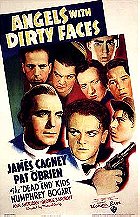
 0 comments,
0 comments, 